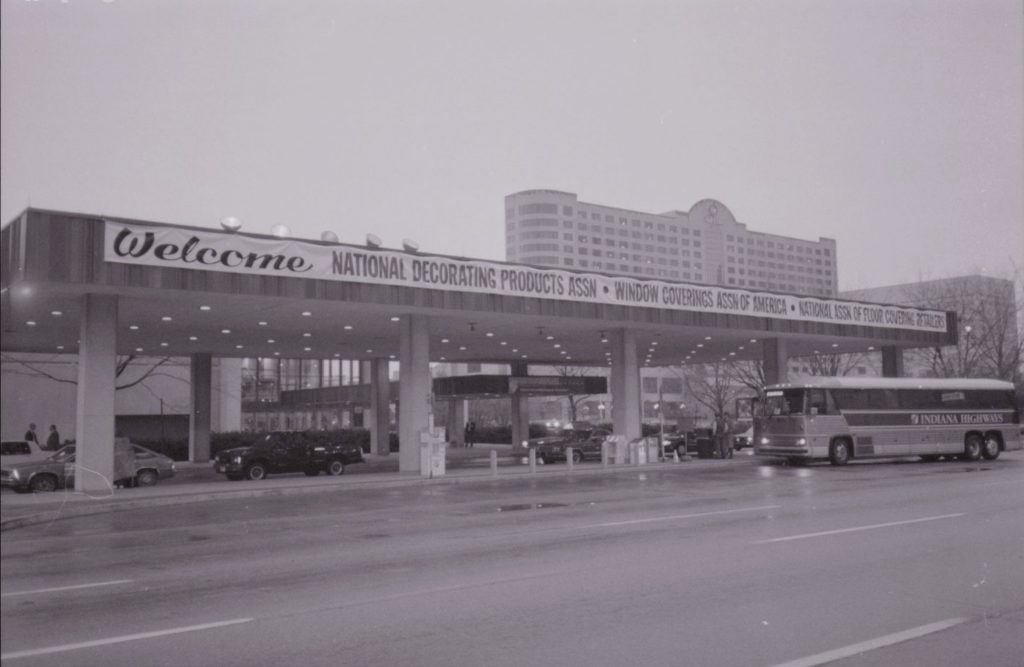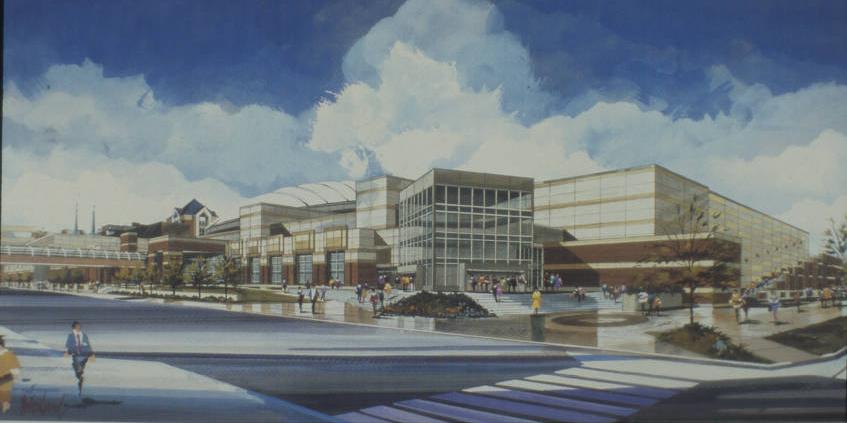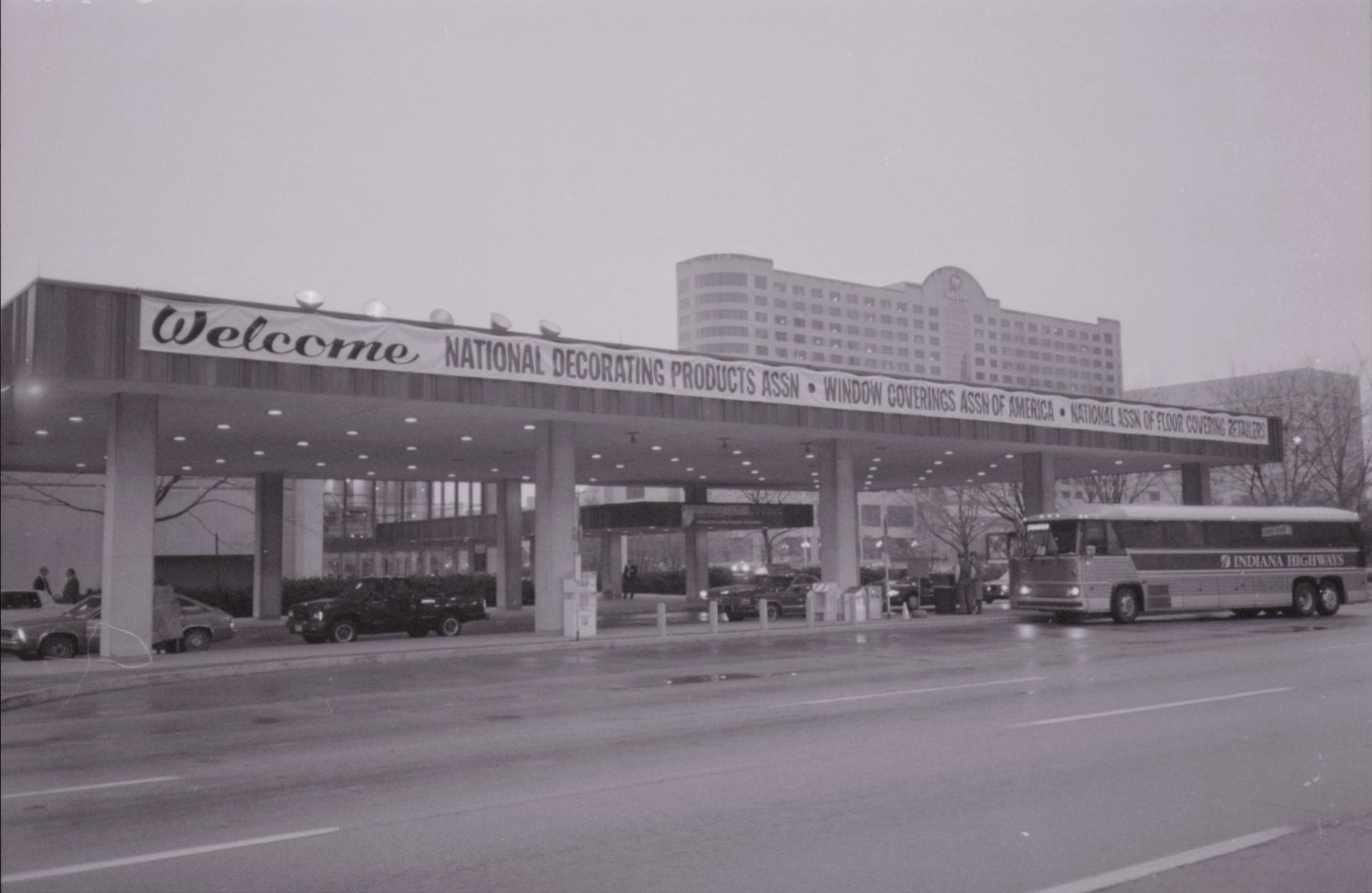Opened in 1972 at a cost of $26 million, the Indiana Convention Center was constructed to increase the city’s capacity to host large meetings and events for the tourism industry. Local city leaders also viewed it as an important catalyst for the revitalization of downtown Indianapolis.

The convention center originally included 38 meeting rooms, 3 exhibition halls, and the 500 Ballroom. Over the years, the convention center has undergone several upgrades and expansions. Major projects were completed in 1984, 1993, 2000-2001, and 2011.
New additions from the 1984 expansion included 17 meeting rooms, 2 exhibition halls, and the White River Ballroom. The convention center’s biggest feature, however, was the newly constructed (later known as the RCA Dome), an adjoining stadium that served as the original home of the . At the time, it was one of only two convention centers in the United States directly connected to a domed stadium. The combined cost for both projects was $94.7 million.
The Colts played their first game in the Hoosier Dome on August 11, 1984. With the addition of the new stadium, the convention center also began hosting , an annual event centered on a Black college football game. Circle City Classic reportedly draws about 175,000 people to the city each year.

By the early 1990s, the Indiana Convention Center and Hoosier Dome had reached a practical maximum occupancy and again needed to expand its facilities. Completed in 1993, the $43 million, two-story expansion significantly enlarged facilities and upgraded the exterior. Meeting space increased to 127,595 square feet (in 52 meeting rooms), exhibit space expanded to 301,500 square feet (including 5 exhibit halls), and a new lobby, registration area, and ballroom (Sagamore Ballroom) were built.
The 1993 expansion also added skywalks to the Indianapolis Westin and Hyatt Regency hotels, providing convention-goers with direct access to over 1,000 hotel rooms and 2,700 parking spaces. All of these updates provided greater flexibility to host multiple large-scale events simultaneously.
In 2000, the convention center’s third expansion increased exhibit space to 403,700 square feet. This project included two new exhibit halls, seven new meeting rooms, and the 98,000-square-foot floor of the RCA Dome. The following year, the convention center’s Exhibit Hall A was converted into a glass-encased entrance, lobby, food court, and ballroom. A skywalk was built across Maryland Street to connect the lobby to the newly constructed downtown Marriott hotel. The total cost of the 2000-2001 expansion was $45 million, with $30 million coming from .
By the late 2000s, local tourism officials, such as the Indianapolis Convention and Visitors Association (later known as ) noted the need for another convention center expansion. Such work would help increase the facility’s capacity to hold a greater number of conventions, trade shows, and corporate meetings each year. It also followed the opening of on August 16, 2008, and the implosion of the Hoosier Dome on December 20th of that same year. Expansion supported these and other recent developments as well as the city’s winning bid to host in 2012.
Completed in 2011, the $275 million Indiana Convention Center expansion nearly doubled the facility’s size. In total, the building included 566,600 square feet of convention and exhibition space, 71 meeting rooms, and 3 ballrooms (500 Ballroom, Wabash Ballroom, and Sagamore Ballroom). An underground connector provided easy access to Lucas Oil Stadium.
The Indiana Convention Center and Lucas Oil Stadium, which are both operated by the , play host to numerous events each year. Some of these gatherings include Indiana Black Expo, , Convention & Expo, Fire Department Instructors Conference, Performance Racing Industry Trade Show, and various sporting contests hosted by the , and .
Between 1999 and 2020, the Convention Center and its ancillary facilities had hosted nearly 8,000 events. Indianapolis hosted 35 major conventions in 1999. By 2019, it grew to 52. Average annual attendance grew from 340,000 from 2000-2009 to 494,000 from 2010-2019, an increase of 26 percent. According to the Indianapolis Business Journal, major events in Indianapolis had contributed more than $3 billion to the local economy since 1999.
In 2020, the COVID-19 pandemic led to the cancellation of conventions and other major events. Its impact on the future of the convention industry in Indianapolis is uncertain.

Help improve this entry
Contribute information, offer corrections, suggest images.
You can also recommend new entries related to this topic.
